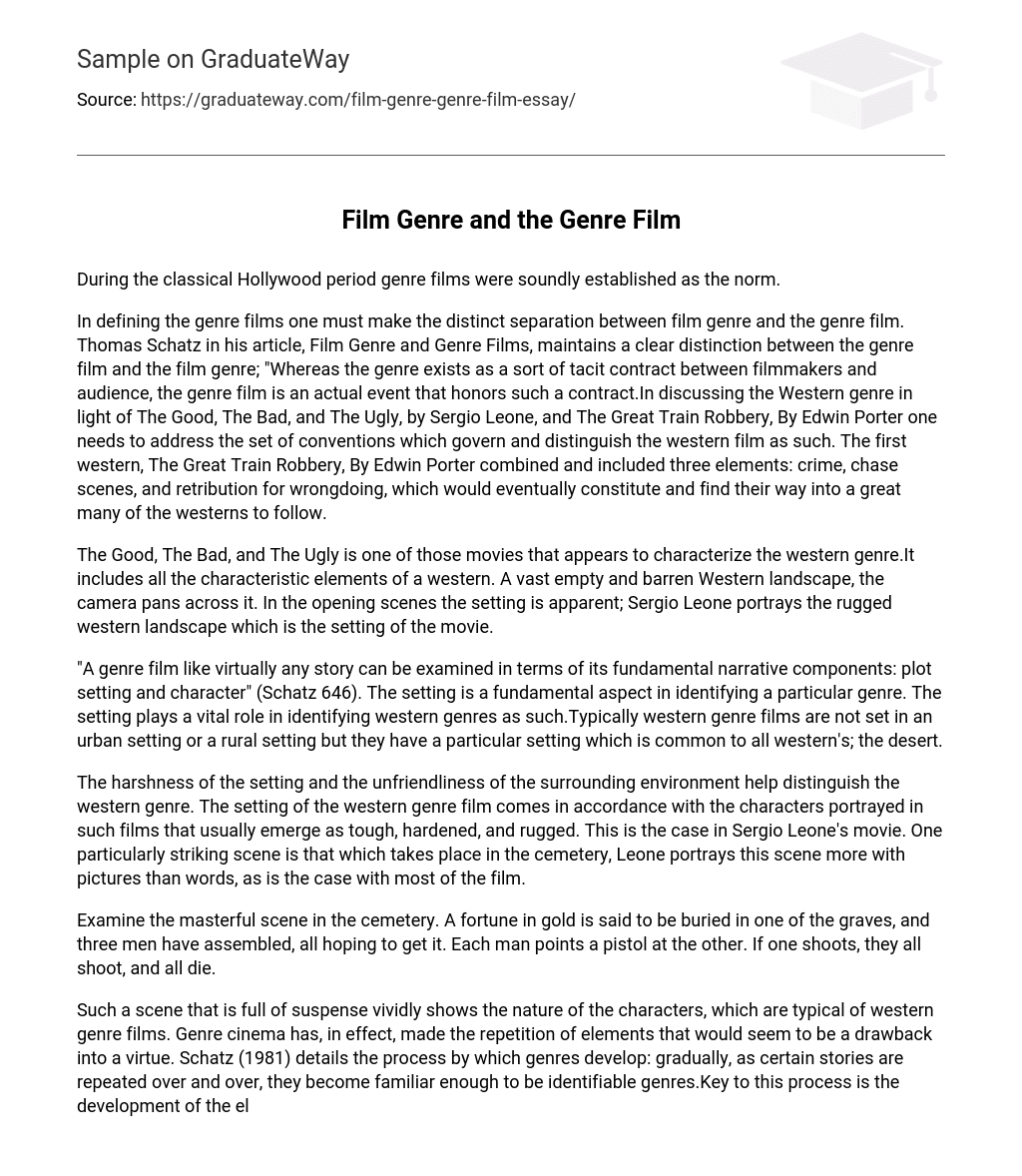During the classical Hollywood period genre films were soundly established as the norm.
In defining the genre films one must make the distinct separation between film genre and the genre film. Thomas Schatz in his article, Film Genre and Genre Films, maintains a clear distinction between the genre film and the film genre; “Whereas the genre exists as a sort of tacit contract between filmmakers and audience, the genre film is an actual event that honors such a contract.In discussing the Western genre in light of The Good, The Bad, and The Ugly, by Sergio Leone, and The Great Train Robbery, By Edwin Porter one needs to address the set of conventions which govern and distinguish the western film as such. The first western, The Great Train Robbery, By Edwin Porter combined and included three elements: crime, chase scenes, and retribution for wrongdoing, which would eventually constitute and find their way into a great many of the westerns to follow.
The Good, The Bad, and The Ugly is one of those movies that appears to characterize the western genre.It includes all the characteristic elements of a western. A vast empty and barren Western landscape, the camera pans across it. In the opening scenes the setting is apparent; Sergio Leone portrays the rugged western landscape which is the setting of the movie.
“A genre film like virtually any story can be examined in terms of its fundamental narrative components: plot setting and character” (Schatz 646). The setting is a fundamental aspect in identifying a particular genre. The setting plays a vital role in identifying western genres as such.Typically western genre films are not set in an urban setting or a rural setting but they have a particular setting which is common to all western’s; the desert.
The harshness of the setting and the unfriendliness of the surrounding environment help distinguish the western genre. The setting of the western genre film comes in accordance with the characters portrayed in such films that usually emerge as tough, hardened, and rugged. This is the case in Sergio Leone’s movie. One particularly striking scene is that which takes place in the cemetery, Leone portrays this scene more with pictures than words, as is the case with most of the film.
Examine the masterful scene in the cemetery. A fortune in gold is said to be buried in one of the graves, and three men have assembled, all hoping to get it. Each man points a pistol at the other. If one shoots, they all shoot, and all die.
Such a scene that is full of suspense vividly shows the nature of the characters, which are typical of western genre films. Genre cinema has, in effect, made the repetition of elements that would seem to be a drawback into a virtue. Schatz (1981) details the process by which genres develop: gradually, as certain stories are repeated over and over, they become familiar enough to be identifiable genres.Key to this process is the development of the elements (storylines, setting, character types, stylistic devices, certain stars, etc) which identify a particular genre.
Genres develop a certain “mind set,” as Schatz puts it. This becomes an attraction, as audiences recognise and come to enjoy a genre. Seeing a western, for many, is a decidedly nostalgic experience, and that will add a certain pleasure to a film even if the quality is low. The different elements of a genre also serve as an unofficial contract, giving the audience some idea of what they are about to see.





